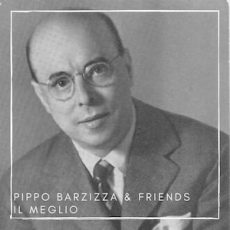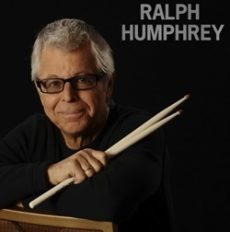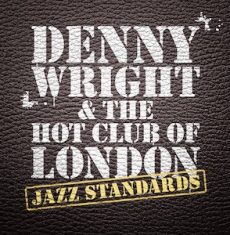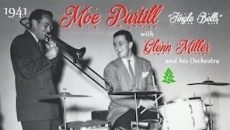
Daily Dose Of Jazz…
Henry Busse Sr. was born on May 19, 1894 in Magdeburg, Germany to a generational German Band family. He studied violin and then trumpet after a broken finger was set incorrectly. In 1912 at age 18 he ran away from the family farm outside of Magdeburg, where he had been forced to play trumpet in his uncle’s band.
Initially jumping ship in New York City and landing in the German ghettos there, unable to speak English, he found a job on a boat heading to California. He acquired some English on his trip in 1916 that found him in Hollywood working as an extra in Keystone Cop films and playing trumpet in a movie theater pit band.
In 1917, he played the trumpet with the Frisco Jass Band before forming his own band, Busse’s Buzzards which was the nucleus of the Paul Whiteman orchestra of the mid-1920s, and featuring Henry they made four sides in total. Being the subject of discrimination because of his German accent caused concern among those living in post-World War I America.
At one point, eight out of the top ten sheet music sales spots belonged to the band. During his peak with them, Busse was earning $350 weekly, while fellow band member Bing Crosby was earning just $150. Busse co-composed several of the band’s early hit songs, including Hot Lips with Gussie Mueller and Wang Wang Blues. The latter sold over one million copies, and was awarded a gold disc in 1920.
Throughout the 1920s he was concertmaster for the Whiteman Band, played alongside the Dorsey brothers, Ray Bolger, and formed the Shuffle Rhythm Band, which went on to enjoy great success in the 1930s and ’40s. A later group, The Henry Busse Orchestra. This group was more of a dance band than a jazz band and had a successful career.
Hitting his peak in 1930-45 playing dance music before the war, and swing during the war. He and his band appeared in two MGM color movies in 1935 called Starlit Days at the Lido, filmed at the Ambassador Hotel, along with Clark Gable and the studio’s stable of stars and in the movie Lady Let’s Dance.
Trumpeter Henry Busse and his Orchestra continued to record and perform up until his death on April 23,1955. at an undertaker’s convention at the Peabody Hotel in Memphis, Tennessee. He was playing with the Shuffle Rhythm Band.
More Posts: history,instrumental,jazz,music,trumpet

Daily Dose Of Jazz…
Giuseppe “Pippo” Barzizza was born on May 15,1902 in Genova, Italy. He was a child prodigy and at age six he entered the Camillo Sivori Institute to study violin, quickly passing the exam and taking his first award. He could hardly read words but he was already able to write a Mozart symphony without error.
After attending primary and secondary schools he went to Cristoforo Colombo High School, where he studied violin at the Conservatory. Listening to his father’s phonograph, Pippo developed a passion for classical and symphonic music. He became skilled in mathematics and decided to follow mathematical studies, graduating as an engineer.
Barzizza also studied harmony, counterpoint, composition, and instruments. He focused on the piano until 1933, followed by the violin, banjo and the trumpet section. During this period he was the lead violinist at Politeama and performed music for silent movies at the cinema near his home.
By seventeen he had stopped his violin studies for the pursuit of conducting and composition. For the next four years he performed on ships and for orchestras in Genova. However, it was in New York City he first heard jazz and swing music. Through the 1920s Pippo became a skilled arranger, joined an orchestra, served in the Italian Army and founded a military orchestra.
His first line up was playing violin for Blue Star Orchestra, then he conducted the Cetra Orchestra, recorded during the Thirties for Fonit, Columbia, La Voce del Padrone, Odeon, Brunswick and Fonotipia record labels. Post World War II he played on soundtracks and counducted the Modern Orchestra. Retiring from music in 1960 he taught music, established a recording studio in his home
At the age of 92, composer, arranger, conductor and music director Pippo Barzizza, who was active from 1924 to 1960 playing violin, piano, saxophone, banjo, and accordion, died on April 4,1994 in Sanremo, Italy.
More Posts: accordion,arranger,bandleader,banjo,composer,conductor,piano,saxophone,violin

Daily Dose Of Jazz…
Ralph Humphrey was born on May 11, 1944 in Berkeley California. While still a student at California State College Northridge he recorded with the Don Ellis Big Band in 1968, and stayed with the band until 1973.
Leaving Don Ellis and jazz he joined Frank Zappa’s band in 1973 and his drumming can be heard on at least a dozen albums. Humphrey, never far from jazz, played drums for Wayne Shorter, Al Jarreau, and Manhattan Transfer, as well aas pop stars Barbra Streisand, José Feliciano, Bette Midler, Captain and Tenille, Richard Carpenter. His music has been heard in television series such as American Idol, Charmed, The Simpsons, Family Guy, and more.
As an educator he has taught the drum curriculum at the Los Angeles Music Academy. He and Joe Porcaro created the drum program for the Percussion Institute of Technology, a part of the Musicians Institute in Hollywood, California. Between 1980 and 1996 he taught the program and headed the department.
Drummer Ralph Humphrey, whose name has been spelled differently in some credits as Humphry or Humphries, continues to perform, record, tour and educate.
More Posts: bandleader,drums,history,instrumental,jazz,music

Daily Dose Of Jazz…
Denys Justin Wright, known professionally as Denny Wright, was born on May 6, 1924 in Deptford, London, England. He grew up in Brockley with frequent forays to the Old Kent Road and the Elephant and Castle. His first instrument was the piano. His older brother was a semi-professional guitarist and soon he was trying to play his brother’s guitar. He began playing professionally before the Second World War, while at school.
A session musician for many years, he frequently acted as arranger and fixer for recording sessions. As a prolific jazz and orchestra composer Wright led many bands, from small ensembles and night club bands to orchestras. He worked with Latin American and Jamaican bands, Afro-Cubists and the Decca Records house band.
In the Forties Wright played in jazz clubs in the West End of London, doing session work, performed in bands on radio shows, and medically unfit to serve due to a childhood injury, he entertained the troops. In 1945 he started the first bebop club in London.
He went on to form several bands, tour the Soviet Union, and continued his work as a session musician, producing Tribute To The Hot Club as The Cooper-Wright Quintet. Denny gave private lessons and at London comprehensive schools, and he lectured at the Royal College of Music on the life of a session musician.
During his career he worked with Stéphane Grappelli, Lonnie Donegan, Johnny Duncan, Digby Fairweather, Ella Fitzgerald, Ken Snakehips Johnson, Billy Eckstine, Fapy Lafertin, Russ Conway, Biréli Lagrène, Humphrey Lyttelton, Marie Bryant, Nigel Kennedy, and George Shearing.
Guitarist and pianist Denny Wright, who was voted the 1980 BBC Jazz Society Musician of the Year, died on February 8, 1992.
More Posts: bandleader,guita,history,instrumental,jazz,music,piano

Daily Dose Of Jazz…
Maurice “Moe” Purtill was born May 4, 1916 in Huntington, New York and] dropped out of high school to start his career as a freelance drummer in New York Studios. At the age of 20 at the outset of 1936 he became a member of the Red Norvo band.
Later he joined Mildred Bailey, played briefly with Glenn Miller in 1937, then worked with Tommy Dorsey in 1938 for a year before picking up with Miller again from 1939 to 1942, when Miller had the bulk of his hits. After Miller’s band broke up in 1942, Moe played with Kay Kyser until 1944, then joined the U.S. Navy. After his discharge, he played briefly in 1946 with the reformed Glenn Miller Orchestra directed by Tex Beneke.
Purtill went on to record in the studio on various projects and participated in a few Miller reunions. He was good friends with Buddy Rich, Trigger Alpert and saxophonist Jack Palmer. He lived in New York City until the early 1970s, retired in 1978 and moved to Sarasota, Florida.
Drummer Moe Purtill died at Valley Hospital in Ridgewood, New Jersey on March 9, 1994.
More Posts: drums,history,instrumental,jazz,music


